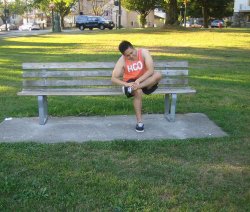A bunion is a tender bony bump that grows on the interior of the foot at the joint of the big toe. Bunions develop gradually and the pressure placed on the big toe joint causes it to lean on the second toe. Eventually, the normal structure of the bone will change and result to the evident bump. This deformity will gradually become enlarged and causes pain or discomfort when wearing shoes or walking.
[youtube url=”https://www.youtube.com/watch?v=xGtSEK5QMoI”]Women are more susceptible to develop bunions, due to wearing tight and narrow shoes that compresses the toes together. This will allow the development of bunions along with other painful symptoms.
Causes of bunions
- Some people inherit feet that are susceptible to develop bunions due to their structure and shape
- Wearing ill-fitting shoes, especially shoes that have narrow, pointed toe box that forces the toes into an unnatural position.
- Suffering from inflammatory conditions such as rheumatoid arthritis and neuromuscular condition particularly polio.
Symptoms

- Inflammation and redness of the affected area
- Pain and tenderness when touched
- A callus or corn that develops on the bump
- Hardened skin that develops on the bottom of the foot
- Stiffness and limited movement of the big toe which result to difficulty in walking.
Treatment
- Apply an ice pack on the sore and inflamed bunions to help lessen inflammation and pain. The cold temperature numbs the nerve endings and minimizes pain. Place crushed ice in a small towel and wrap it and then place on the affected area for at least 5-10 minutes at 2-3 times every day.
- Massage the area regularly helps increase the flow of blood in the area and provides relief from discomfort caused by the bunions. Regular massage of the area also helps lessen the size of the bunion and make it less susceptible to develop corns and calluses. Warm coconut oil and using your fingers to perform deep friction massage at least 10 minutes for 2-3 times every day.
- Perform foot exercises regularly to strengthen the muscles of the legs and feet and minimize development of bunions. Sit on a chair and place the affected foot on the thighs, and then roll a tennis ball or golf ball between the mounds of the toes and all the areas of the sole that is tight for at least 5-10 minutes every day. Stand up straight and point the toes straight ahead for at least 10 seconds and then curl them under for 10 seconds for several times every day.
- Soak the affected toe in Epsom salt to help lessen the pain. Epsom salts contains high levels of magnesium that helps in regulating the pH level of the body which is needed to minimize the inflammation and pain. In a small tub filled with warm water, add a handful of Epsom salt and mix them well until salt is dissolved, and then soak the foot in the mixture until the water becomes cold. Dry the foot thoroughly then massage it using coconut oil. Perform this procedure at least 3 times a week.
